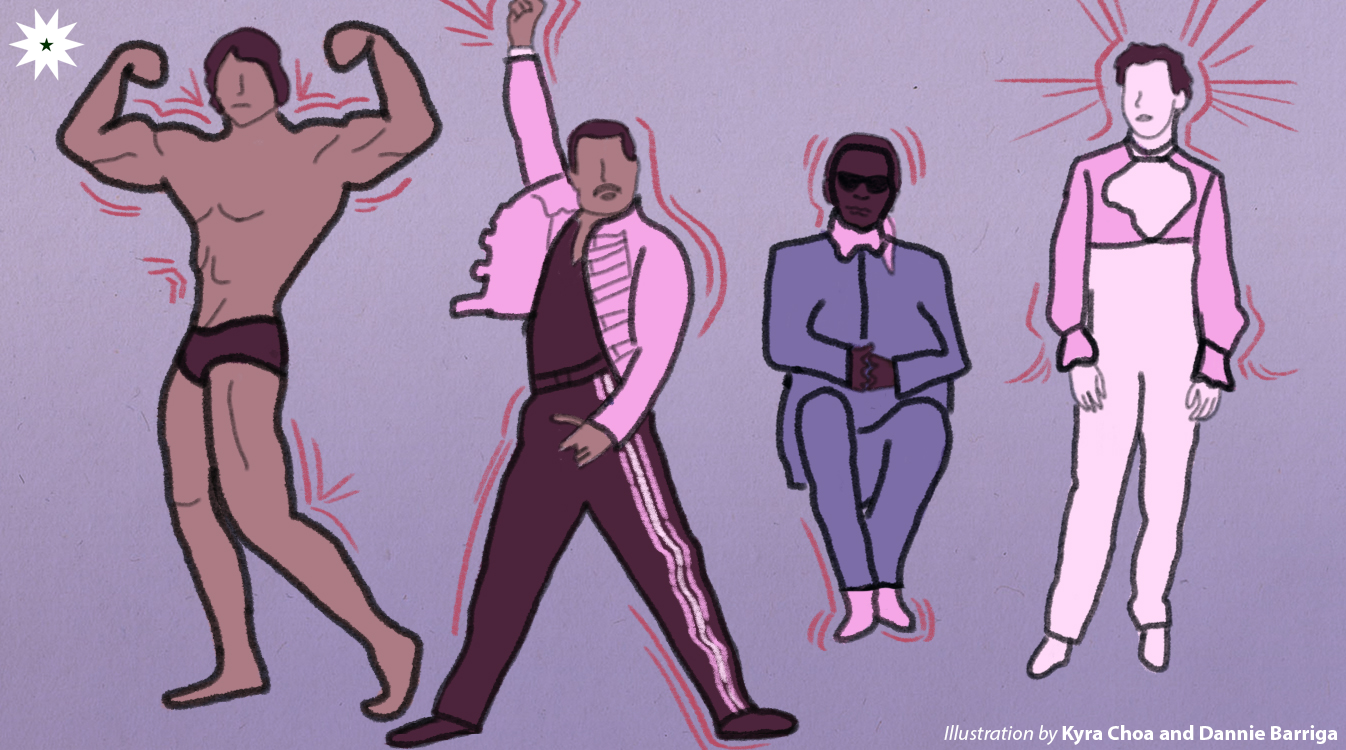Painted by different cultures, gender, and historic times, the portrait of the ideal man is diverse, transforming the long enduring concept of mansculinity into different forms.
As modern drag queens, flamboyant fashion designers, skilled makeup artists, and transgender individuals are now more accepted as “men” in society, it becomes clear that “being a man” is no longer something defined by physical appearance, status, or athletic prowess. Masculinity is now being freed from its restrictive shackles.
His story
The image of the strong male hunter and the gentle child-rearing cavewoman is seared in our minds, and with it came the foundation of our understanding of gender identities—setting the expectations and requirements of what made a man the person he was.
Fast forward and while the world has changed, some things remain inherently the same but in another form. The qualities of gentleness and compassion were then assigned to femininity, while strength and bravery were assigned to masculinity—as if these qualities were mutually exclusive to any one gender and sex. Whether they liked it or not, the men carried on doing the heavy work, carrying the weight of masculinity and its impossibly high standards of being strong, fearless, successful, and intelligent. Fortunately, times have changed since then and the idea of what a man is has also evolved.
Professor Christianne Collantes, associate professor of Political Science, defines masculinity as “related to performances of gender, specifically of displaying a certain socially prescribed idea of what ‘manhood’ is, depending on the context”. In actuality, masculinity is part of a broader spectrum of gender.
If the chiseled six-pack, exudation of machismo, and aggressive personality were seen as the only acceptable masculine traits back in the day, modern times are helping to pave the way for a more worldly idea and depiction of men. “The younger generations are gaining a better understanding of how masculinity itself is unstable and they are asking for changes in terms of the after-effects of toxic masculinity in their culture. Feminist theory is becoming integrated more into mainstream politics and discourses,” Collantes says. It is now the time of the Kim Jongins, Timothée Chalamets, Harry Styleses, and Ezra Millers. With their popularity comes the understanding that it is okay to step out of the traditionalist confines of masculinity as defined by our elders and to embrace the qualities in themselves that society has deemed “feminine”—thus, not “manly”.

‘Do it like a man’
Masculinity may be misinterpreted as being tied to womanizing, aggressive, and arrogant behavior; it can be easy for men and women to blur the lines defining what masculinity really is. As Jonal Ticug (IV, BSCS-ST) explains succinctly, “Masculinity is not equated to being men.”
Masculinity is neither inherently positive or negative—for both the older and newer viewpoints. With that, the terms “toxic masculinity” and “hypermasculinity” come to light, with the former referring to misogynistic attitudes and behavior and the latter pertaining to an exaggeration and emphasis of physical strength, aggression, and sexuality, respectively. The bottomline is that both psychological terms feed into the “boys will be boys” mentality, excusing any violent or sexual misbehavior for the person’s biological gender.
Breaking it down, Ridge Dantes (IV, PHL-FIN) states, “Toxic masculinity, for me, is when a man imposes his notion of how he can express his masculinity to another person. This, however, is not limited to a single person, as toxic masculinity can be ingrained or inculcated in systems and institutions.” Masculinity is not inherently toxic and toxic masculinity is harmful not just to women but also to the people who partake in this behavior. When damaging ideas and standards are imposed on men, women, or anyone at all, it is society who has lost.
Ticug explains, “To avoid such [a] mindset, I would suggest other people to identify it as a problem and as toxic behaviour. Accepting it as it is basically makes it a norm in our society.”
The masculinity of tomorrow
With each passing day, our society is becoming more and more comfortable with looking past history’s preconceived notions of masculinity. While the media is usually focused on portraying masculinity through the likes of celebrities such as Dwayne “The Rock” Johnson, Zac Efron, and Chris Hemsworth, nowadays K-Pop idols and guys with “soft boy aesthetics” are bursting onto the scene and challenging that stereotype.
Hanz Arce (V, BS-IT) says, “You no longer have to be the man that can change the tire or the man that can fix the broken heater at home. The flexibility in masculinity broadens horizons for men.” A better and more nuanced understanding of masculinity will welcome a society that no longer attributes a man’s worth to the money he makes or his ability to provide; thus, helping not only men but also women break free from restrictive gender roles.
Not afraid to stand out from the rigid structure, the LGBTQ+ population and other movements such as feminism, continue to prove how the confines of gender roles and assumptions are no longer definitive for this generation.
Ticug states, “Being a man has been stereotyped [as] anything bold and strong, but for me, being a man is standing up for what you believe in and being able to stand by your convictions and defend those who are being oppressed. At the same time, it also means being vulnerable and gentle because a real man is not afraid to show [emotions]. May paninindigan at may puso ang mga tunay na lalaki.”
(The true man takes a stand and has a heart.)
